Best high-end electric guitars 2025: the finest guitars money can buy
If money were no object, this is the all-star list of high-end axes from Gibson, PRS, Fender, and more that you’ll want in your collection
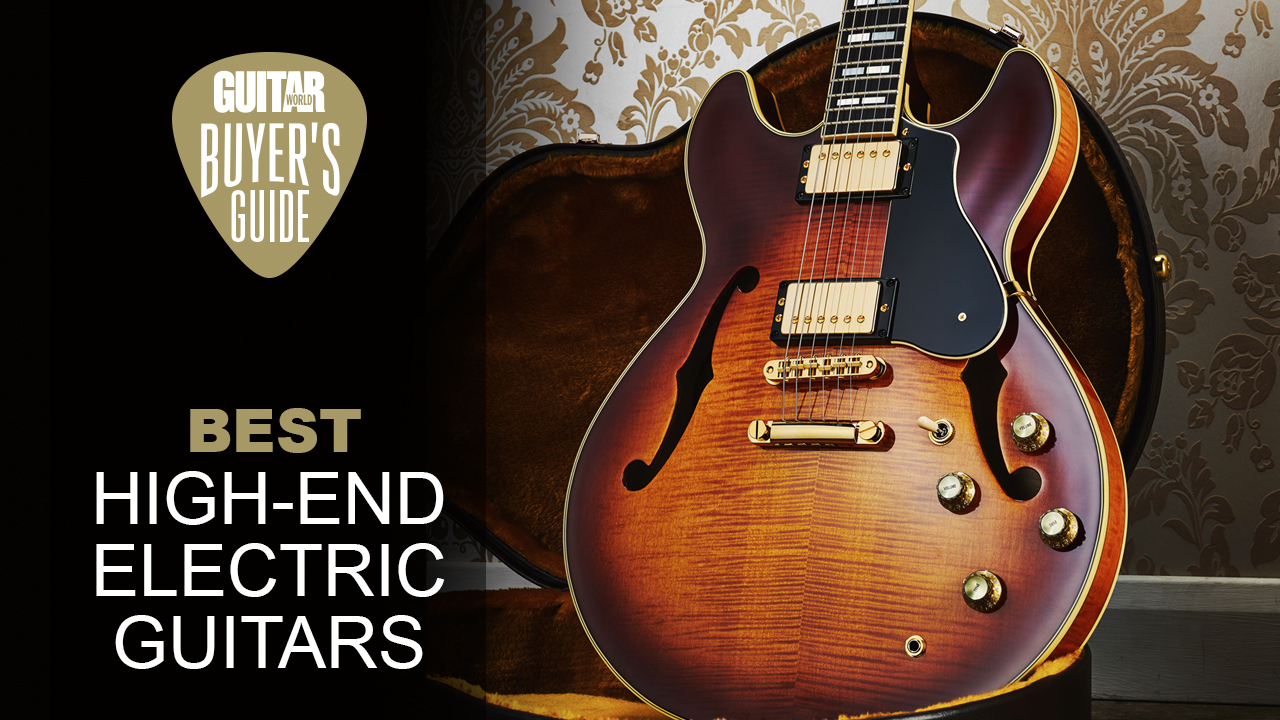
Whether it's a landmark birthday, graduation present, retirement gift, or you just lucked into some extra cash, there are few better ways to celebrate a special occasion than getting yourself one of the best high-end guitars. High-end guitars benefit from the best materials, hardware, and pickups, all built by master craftspeople to deliver a truly sumptuous instrument.
Of course, you can get a good guitar for far less money than the ones on offer here, but once you get into the high-end of the guitar world you're paying for more than just an instrument. A true high-end guitar is a piece of art, crafted from the finest materials by expert luthiers. It's an investment in the future, and many will be limited editions that will gain value as they age.
Whether you love vintage-correct instruments based on all-time classics, or you want the most modern spec instrument with all the mod-cons and ultimate shred playability, we've picked out an expansive collection of the finest high-end guitars money can buy.
Our top picks
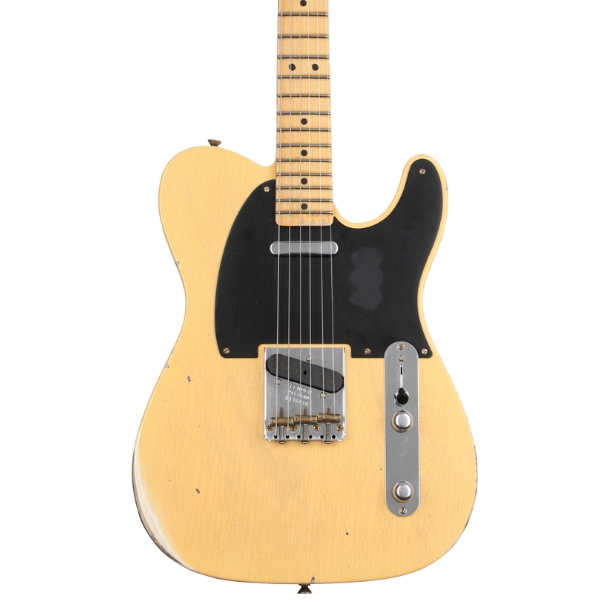
Probably the most legendary of all Telecaster guitars, this Fender Custom Shop '52 Tele is an homage to one of the all-time greats, featuring period-correct pickups, Nocaster wiring for added flexibility, and is available in a range of relic options.

A modern take on an all-time classic, the Suhr Standard Plus is the ultimate S-type guitar that can cover a lot of ground. Incredibly well put together, Suhr has thought about every detail when constructing this superb instrument.
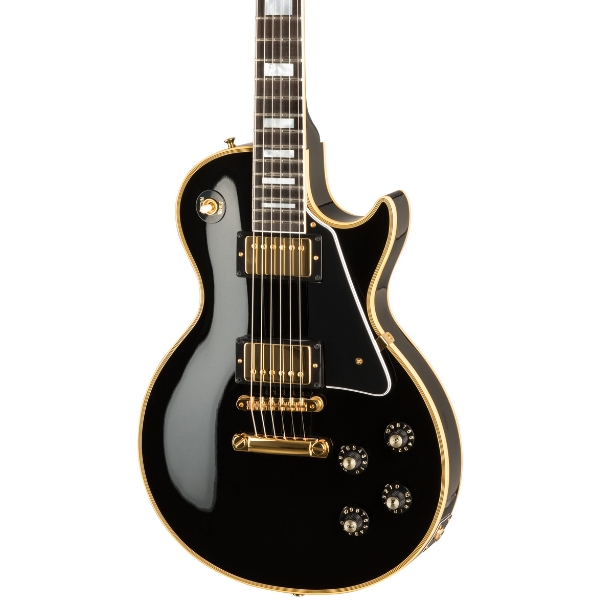
Colloquially known as the 'black beauty', this Gibson '68 Les Paul Custom Reissue is an original spec recreation courtesy of the Gibson Custom Shop. Despite its distinguished looks, this guitar is a firebreathing monster with unbelievable sustain.
Best T-style
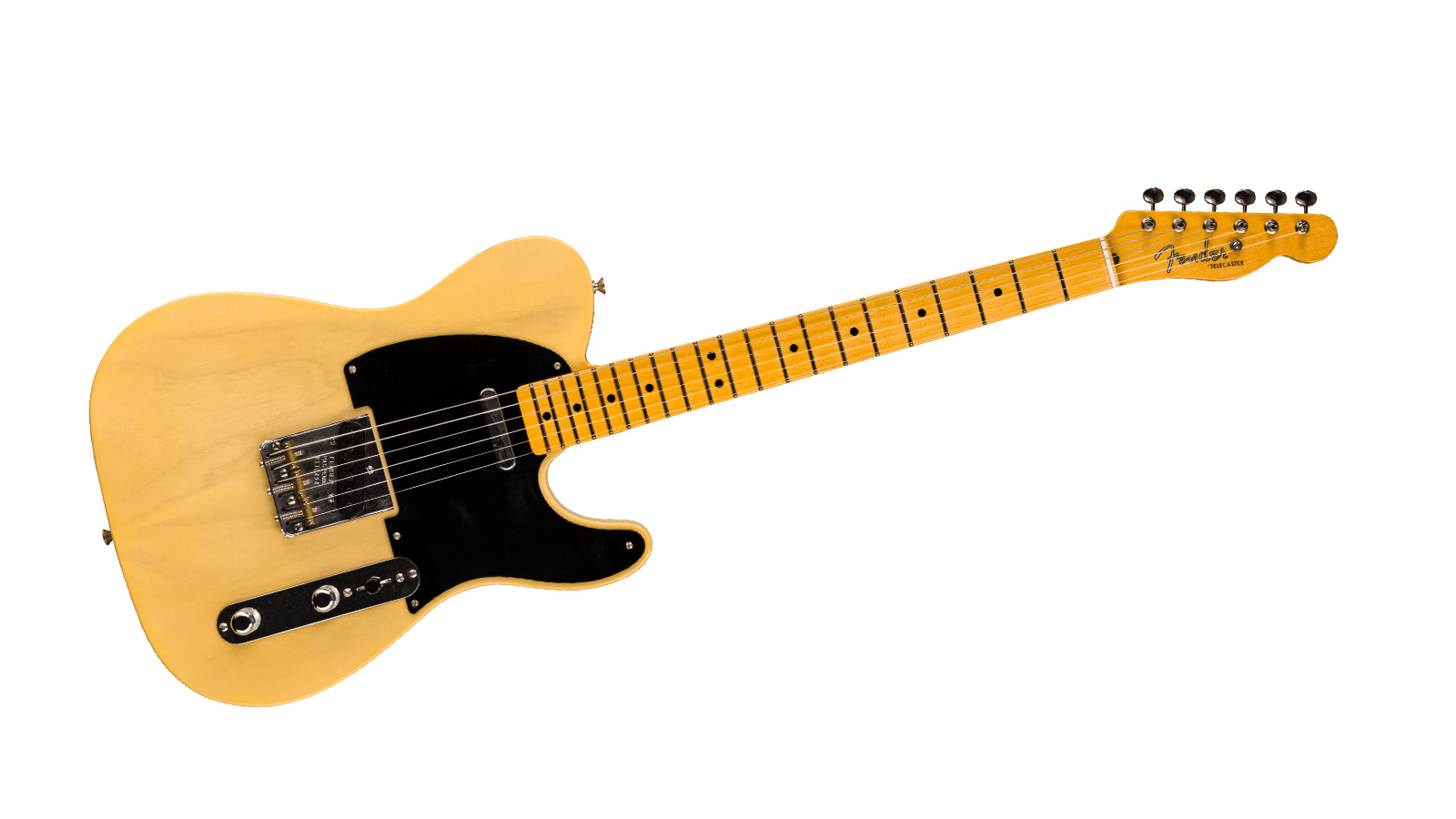
1. Fender CS Time Machine Series ’52 Telecaster
Our expert review:
Specifications
Reasons to buy
Reasons to avoid
The ’52 wasn’t the very first Telecaster, but in most guitarists’ eyes it’s the most iconic. This is Fender Custom Shop’s latest homage to Leo’s masterpiece – it’s about as complicated as a knife and fork, but none the worse for that.
Two Custom Shop hand-wound ’50/’51 Blackguard pickups sit at the very heart of this Tele, connected up with ’51 modified Nocaster wiring, which enables you to blend both pickups together in switch position one. The resulting tone is reassuringly vintage, but a Tele like this can journey across any sonic territory from country to rock to jazz.
The blonde body, which gets progressively more butterscotch as the relicing escalates, comprises two pieces of select ash with a bolted-on ‘soft V’ maple neck. The latter boasts a vintage compound-radius fingerboard and 21 narrow tall frets. You can choose between six levels of relic, from new old stock through to super-heavy relic.
It’s not lost on us that the world’s first mass-produced electric guitar is now being exquisitely crafted by some of Fender’s best luthiers. Is it as good as an original? In many ways, it’ll be substantially better.
Best S-style
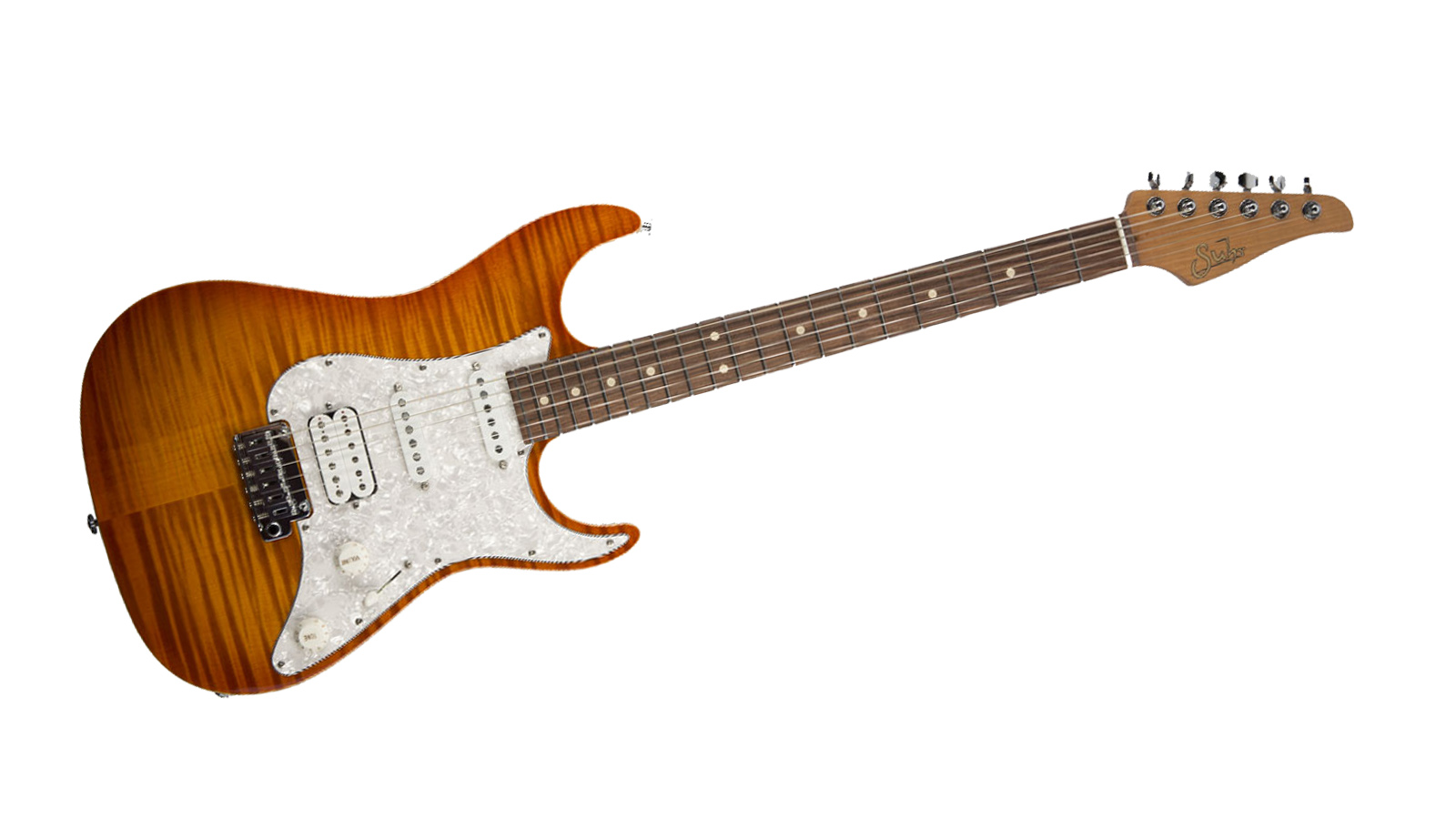
2. Suhr Standard Plus
Our expert review:
Specifications
Reasons to buy
Reasons to avoid
How do you improve on a masterpiece? This is Suhr’s modern take on the classic Strat-style guitars of the ’50s that we all know and love, and it’s a real departure.
The Standard Plus’s slender body, sharp-radiused edges and long horns give it an assertively modern look – a taste of what’s to come. Then there’s the stunning flame maple top, the scraped binding, the roasted maple neck and the beautifully polished stainless-steel frets – eye-catching features that mark this guitar out as something very special. S-types aren’t built any better than this.
It’s more than just a pretty face, though, and the Standard Plus’s HSS setup gives you plenty to play with. The neck and middle single coils sound beautifully vintage; bell-like, clear and articulate. They’re also hum-free, thanks to Suhr’s proprietary Silent Single Coil System II.
Select the high-output SSH+ humbucker in the bridge and the Standard Plus will dramatically shift personality. Dial in some modern high-gain settings on your amp and it’ll start flirting with strident metal tones. Back off and you’ll be in classic rock territory.
Times have moved on and Suhr has moved with them. If the thought of a beautifully made, thoroughly versatile S-type excites you, then look no further. Yes, Suhr!
Best single cut
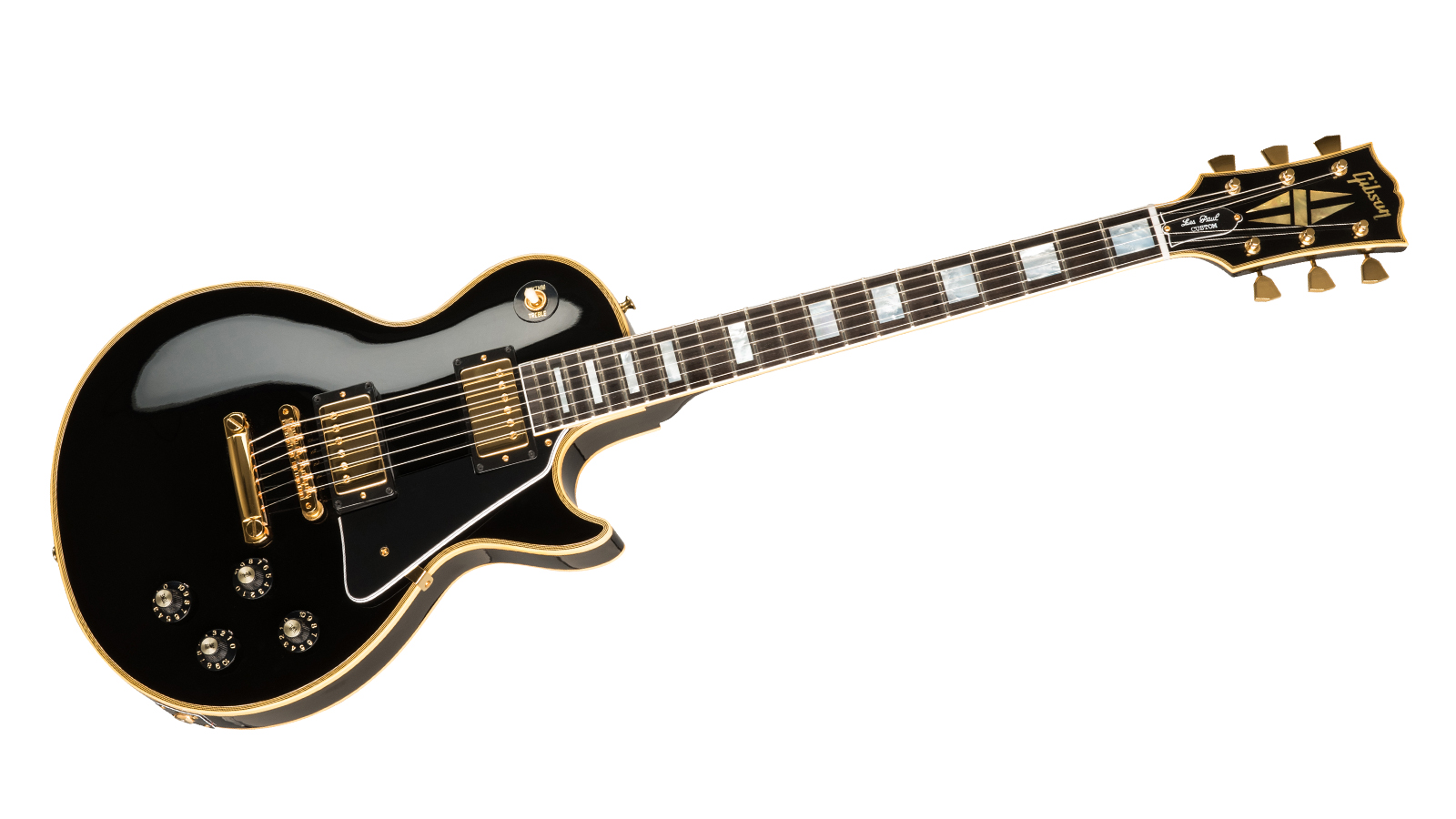
3. Gibson 1968 Les Paul Custom Reissue
Our expert review:
Specifications
Reasons to buy
Reasons to avoid
In the early ’50s, Les Paul requested a more sophisticated-looking version of his newly invented eponymous guitar; one that looked like it was dressed up in a tuxedo. He was, after all, playing some of the smarter jazz venues at the time. Gibson’s answer was the piano-black Les Paul Custom with gold accouterments, quickly nicknamed ‘The Black Beauty’.
This version, which is Gibson Custom Shop’s original-spec recreation of the ’68 Custom reissue (stay with us) is simply breathtaking. Don’t let those smart looks deceive you, though – in one guise or another, the LP Custom has seen active duty with everyone from Randy Rhoads to James Hetfield. Beauty one minute, beast the next.
The maple-capped hog body is loaded with two ’68 custom humbuckers for killer tone and incredible amounts of sustain. Despite its vintage looks, the neck is a medium C-shape with a relatively flat, 12”-radius ebony fretboard, so it’s a very comfortable handful to play.
Best semi-hollow
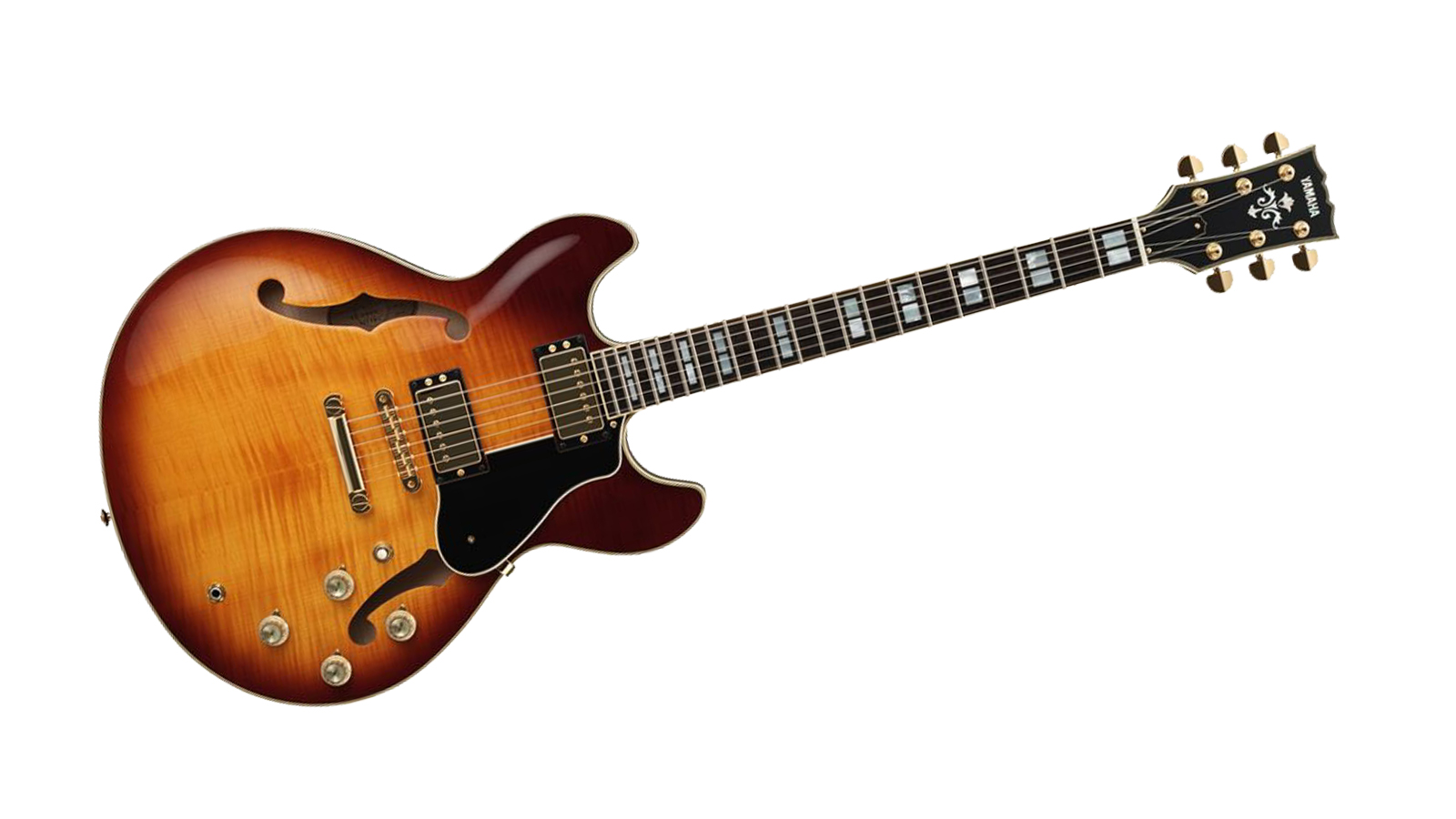
4. Yamaha SA2200
Our expert review:
Specifications
Reasons to buy
Reasons to avoid
Yamaha rarely makes mistakes, but it’s dropped a real clanger here. They've given this semi-hollow SA2200 an RRP of just $3,148/£2,422. More mystifying still, many retailers are choosing to discount these beauties.
Maybe the issue is that the SA2200’s body shape looks somewhat familiar – people who insist on a genuine Gibson ES-335/ES-355 are prepared to pay top dollar for one.
The SA2200 is made in low numbers in the same Hamamatsu shop where Yamaha makes its high-end acoustics (we’re talking five figures for a GC82). The quality of craftsmanship is off the charts – we challenge you to find anyone with a bad thing to say about this guitar.
It’s voiced slightly differently to an ES-335 – perhaps a touch smoother with a little more clarity in the mids – and the Alnico V humbuckers can be coil-split for single-coil tones, too. With its flame maple/sycamore laminate body, mahogany neck, ebony fingerboard and Gotoh hardware, the SA2200 is good for any genre from jazz to rock.
Best for shred
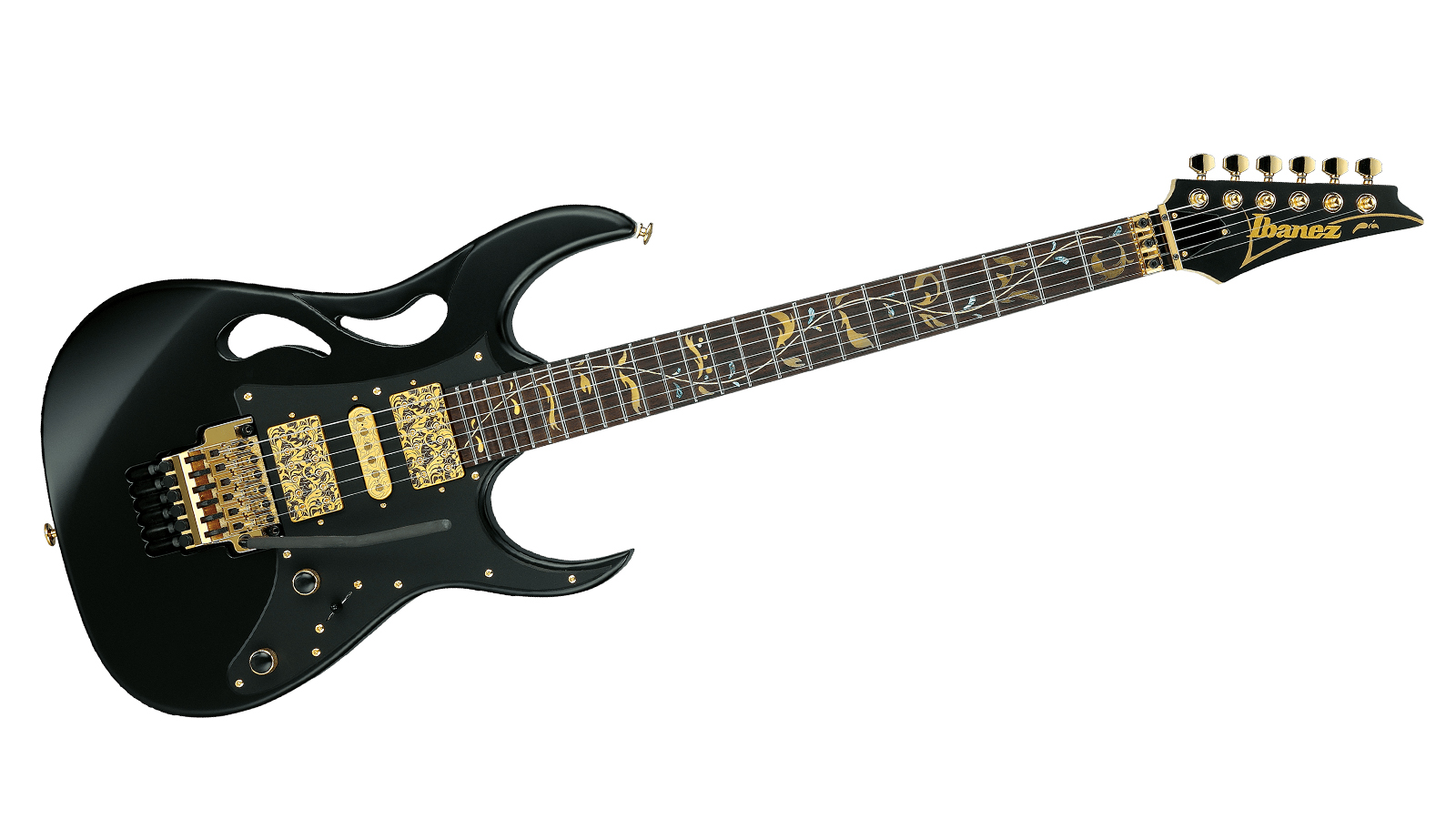
5. Ibanez PIA3761
Our expert review:
Specifications
Reasons to buy
Reasons to avoid
Who needs ‘vintage ’50s looks’ when you can have a guitar designed by one of the world’s greatest contemporary guitarists? It’s no secret that brands such as Gibson and Fender feel constrained by their heritage, unable to properly update their product lines because their loyal following regards anything non-vintage with suspicion; disdain even.
Not so with Steve Vai and Ibanez, a fruitful partnership that’s spawned some refreshingly modern takes on the electric guitar. The PIA is their latest creation, named after Steve’s wife Pia Maiocco, in case you were wondering. Isn’t that sweet.
It’s Steve’s shot at improving on what many already consider to be the ultimate guitar – the legendary Ibanez Jem, which he developed in 1985. Visually, the PIA is a slightly mellower interpretation of the aggressively styled Jem. Apparently, the new ‘petal grip’ and blossom fretboard inlay symbolize unity, companionship and interpersonal bonds.
Steve hasn’t gone all soft on us, though. Under the hood, there’s a trio of mid-to-high output DiMarzio UtoPIA pickups, voiced for smooth highs, balanced mids and a pronounced lower end. In neck and bridge positions, you get full humbucker tones, and in positions two, three and four the ’buckers are split.
Other contemporary features include the five-piece maple/walnut neck, the rosewood fretboard that’s scalloped at the dusty end for easier bends, and the ultra-reliable Edge trem system with its unique lion’s claw cavity design.
Does the PIA represent the ultimate in guitar development? Only you can decide…
Best oddball
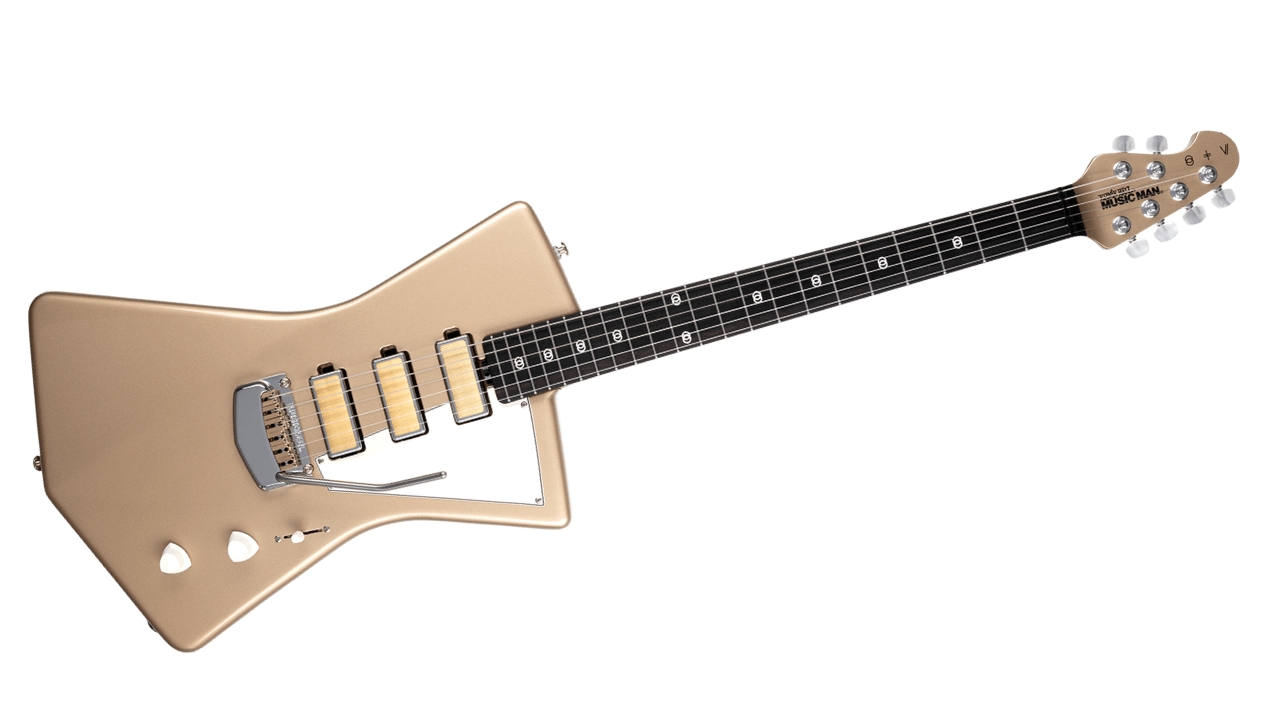
6. Ernie Ball Music Man St. Vincent Goldie
Our expert review:
Specifications
Reasons to buy
Reasons to avoid
You've certainly heard of St. Vincent by now, and if not, it might be time to put down your cassette player and head over to YouTube. Known for her chameleon-like ability to perfectly blend genres like soft rock, electropop, and experimental music, the Music Man St. Vincent Goldie acts as her magical wand, uniting these esoteric styles as if they’ve always belonged together.
Esoteric is certainly the right term for this guitar. With design elements reminiscent of an Explorer and Firebird, this angular instrument rocks the foundations of solid-body guitar platitudes. It's not just beauty over function here either; the unique reverse headstock, equipped with locking tuners, the sculpted neck heel, 12”-radius fingerboard are all designed with the player in mind.
However, it’s the Music Man Custom Gold Foil Mini Humbuckers that make this guitar the versatile beast it is. There’s plenty of mid-range push, without the fat bottom end, all the whilst riding on the brighter side of things. The bridge pickup provides plenty of bite and is slightly hotter than the others for when you want to start pushing your amp.
Classy details like the figured roasted maple neck and modern trem solid brass saddles complement the cashmere finish, adding a premium feel to this slightly wacky high-end electric guitar.
More options...
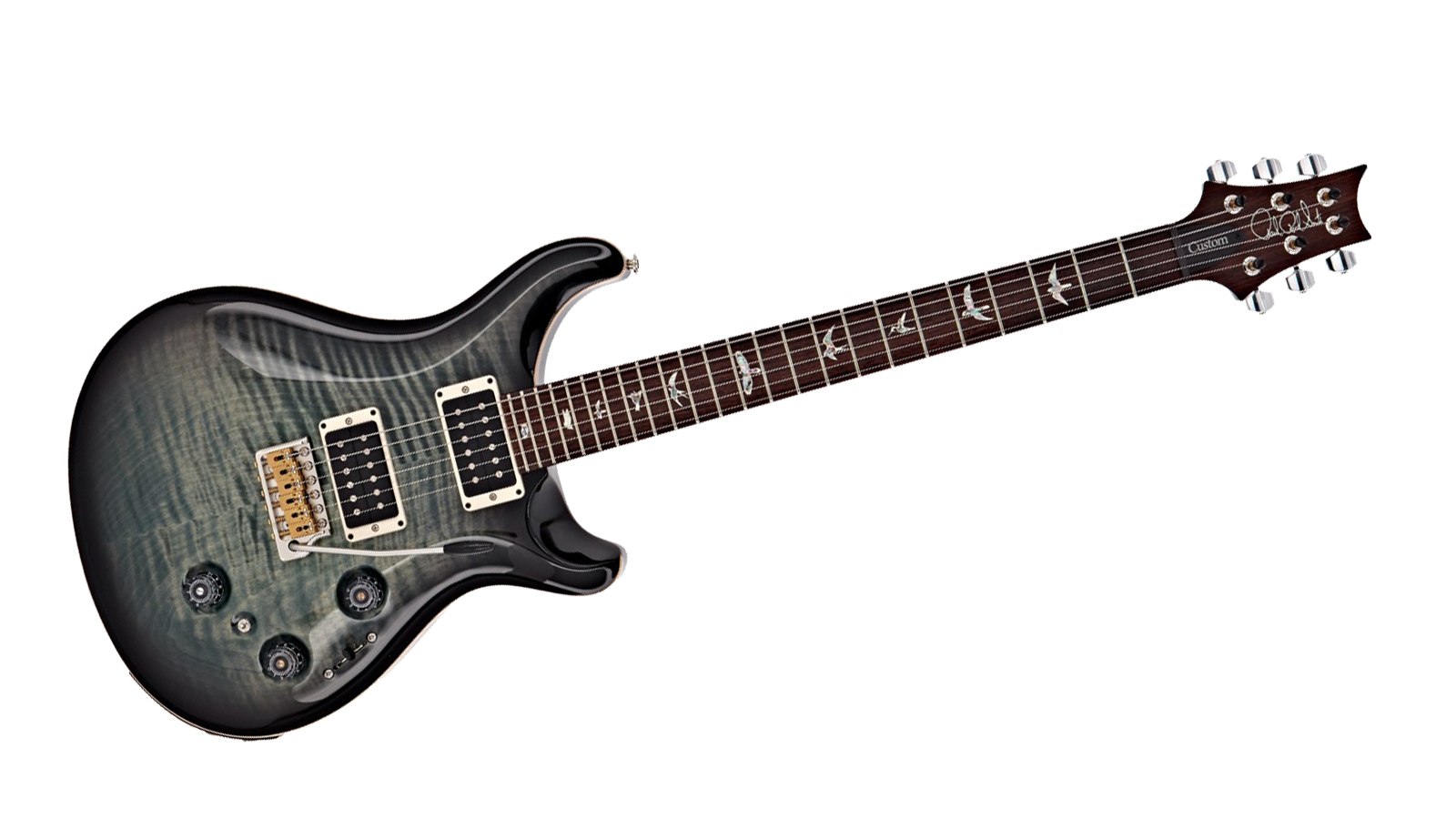
7. PRS Custom 24 Piezo
Our expert review:
Specifications
Reasons to buy
Reasons to avoid
Some of us still think of PRS as the newbie on the block, so it’s surprising to recall that Paul Reed Smith launched his Custom 24 guitar almost 37 years ago now. It remains his flagship guitar. He’s launched plenty of other models in its wake, including the vintage-inspired McCarty, but if you want the purest PRS DNA then this is the one to own. We’d even go as far as to claim that it’s a modern classic.
PRS has done well with the Custom 24 because Paul’s attention to detail is second to none. His guitars are legendary for the level of craftsmanship invested in them, which is reassuring when you’re parting with this kind of money. He’s also a remarkable engineer, designing not just the guitars but many of the components, too, including PRS’s innovative trem systems and its pickups.
The original Custom 24 was lauded for its beauty and versatility. With its Fender-like, 25”-scale length, Strat-like trem system and Gibson-like dual humbuckers, it covered a lot of ground. The version we’re recommending here adds even more to the mix, with a Gen III piezo system, which enables you to go from rich humbucker tones to the natural sound of an acoustic in a heartbeat. You can even blend the two.

8. Gretsch G6136TG Players Edition Falcon
Our expert review:
Specifications
Reasons to buy
Reasons to avoid
Nothing looks or sounds like a Gretsch White Falcon. It so belongs in another era, propped up on the front seat of a ’59 Cadillac Eldorado, yet it’s found favor with musicians as diverse as Don Felder, Neil Young, Billy Duffy and John Frusciante.
While everyone falls in love with its historic good looks and iconic tone, back in the day the White Falcon suffered a reputation for being – how can we put this politely? – idiosyncratic to own and play. Tuning issues, noise issues, feedback issues, floating bridge issues – it wasn’t an easy guitar to live with.
Gretsch has cast aside all of this antique quirkiness with its Players Edition. It still makes a bold visual statement, but the Filter'Tron pups have been revoiced for more contemporary tones, the circuitry has been updated for added versatility, and the body thickness is now a comfortable 2.5” deep.
Don’t get us wrong, it’s still a Gretsch – there’s barely a square inch that doesn’t dazzle with gold or glisten with glitter. The thing is, it now plays as good as it looks.
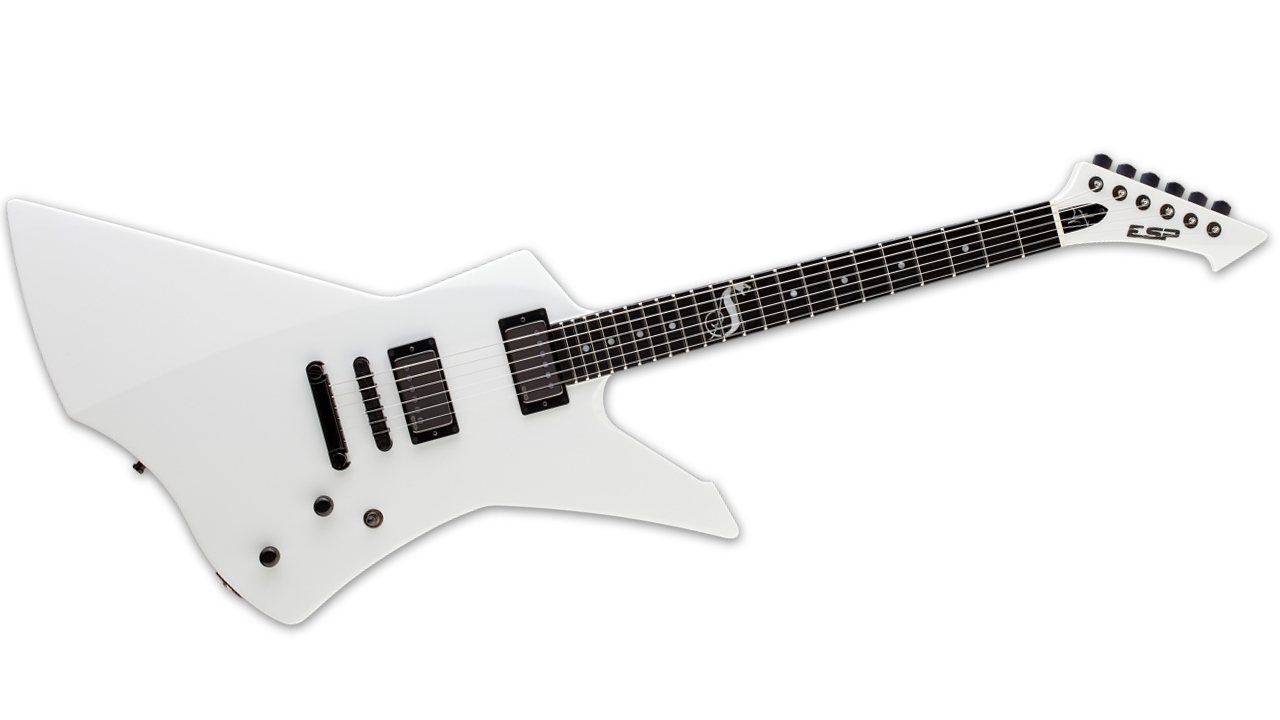
9. ESP Snakebyte James Hetfield Signature Guitar
Our expert review:
Specifications
Reasons to buy
Reasons to avoid
If you’re a huge Metallica fan with a significant amount of wonga burning a hole in your pocket, then welcome to your new guitar. Introduced in 2022, the Snakebyte is the very model that James Hetfield uses. Not a tribute or an interpretation – the very same one.
No, it’s not cheap but it is handmade, one guitar at a time, by Japanese luthiers known to possess an almost religious fervor for quality and attention to detail. You won’t find a better-made guitar.
The pickups are James’s signature JH ‘HET’ humbuckers. These are powerful active pups, but James and the team at ESP have tweaked them to deliver nuance and dynamics more associated with passive pickups.
The body and neck are finest-grade mahogany, and the fretboard is glassy-smooth ebony. ESP strap locks, Sperzel locking tuners, along with a TonePros locking TOM bridge and tailpiece, complete the hardware. Now available in either Black Satin or Snow White, this is the ultimate high-end guitar for the devout Metallica follower.
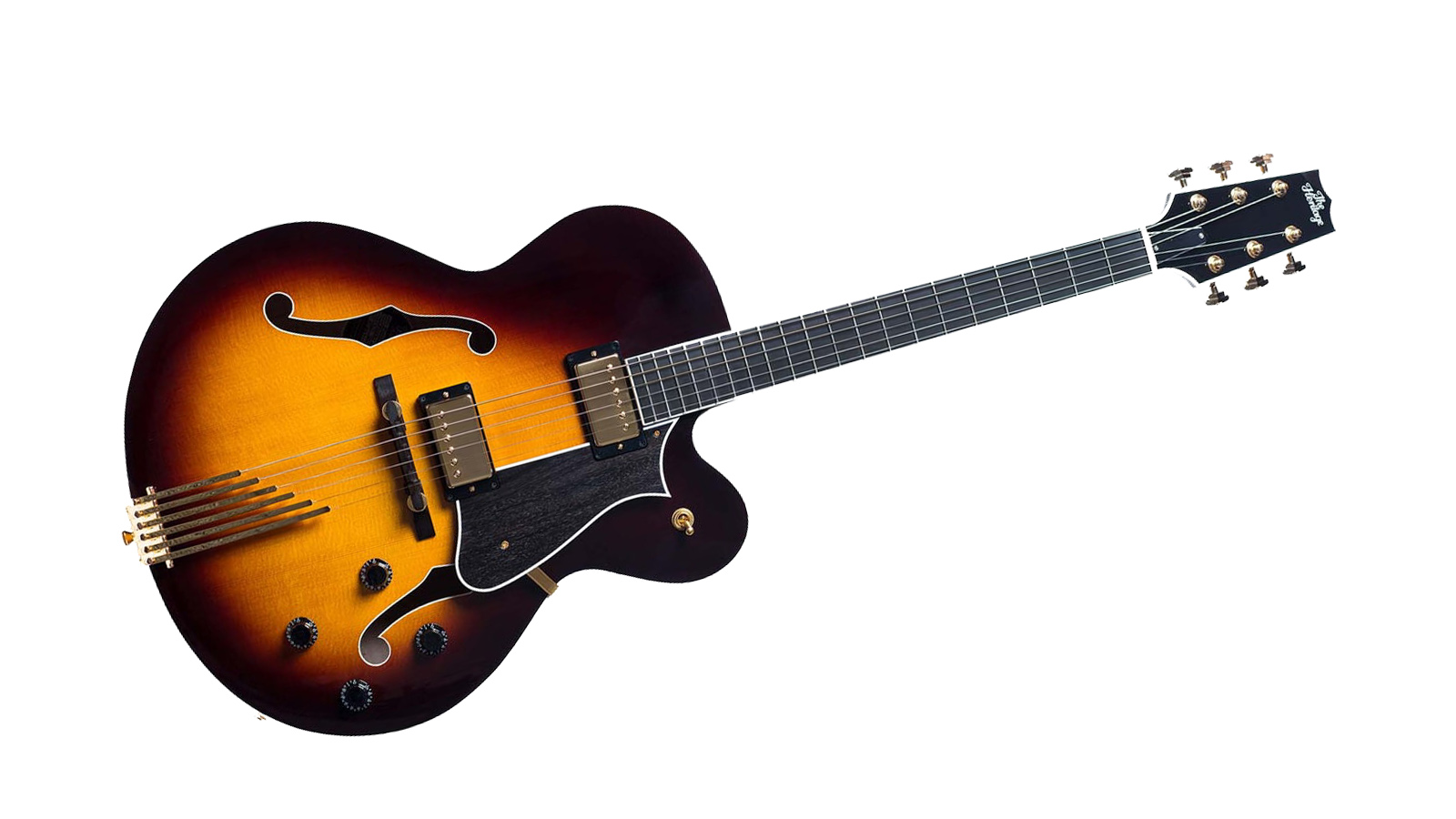
10. Heritage Standard Eagle Classic
Our expert review:
Specifications
Reasons to buy
Reasons to avoid
You can play jazz on a thinline ES-335 or a Casino – heck, some guitarists even get away with playing it on a Telecaster. But if you’re really serious about your playing, at some point you’re going to hanker after a proper jazz box like the Heritage Eagle.
The Eagle looks the part, but more importantly it delivers that quintessential jazz tone that only a large hollowbody can. There’s nothing much new to see here, just good old-fashioned traditional craftsmanship.
It’s a long story but, essentially, when Gibson moved out of its original Kalamazoo factory in 1985, some of the luthiers stayed put to found Heritage Guitars. So, it could be argued that the Heritage Eagle can claim a shared lineage with some of Gibson’s classic archtops, such as the fabulous L-5.
There’s nothing ground-breaking about the timeless Eagle – spruce top, deep maple body, ebony fretboard, twin Seth Lover humbuckers, white binding, and nitro finish. Would you want it any other way?
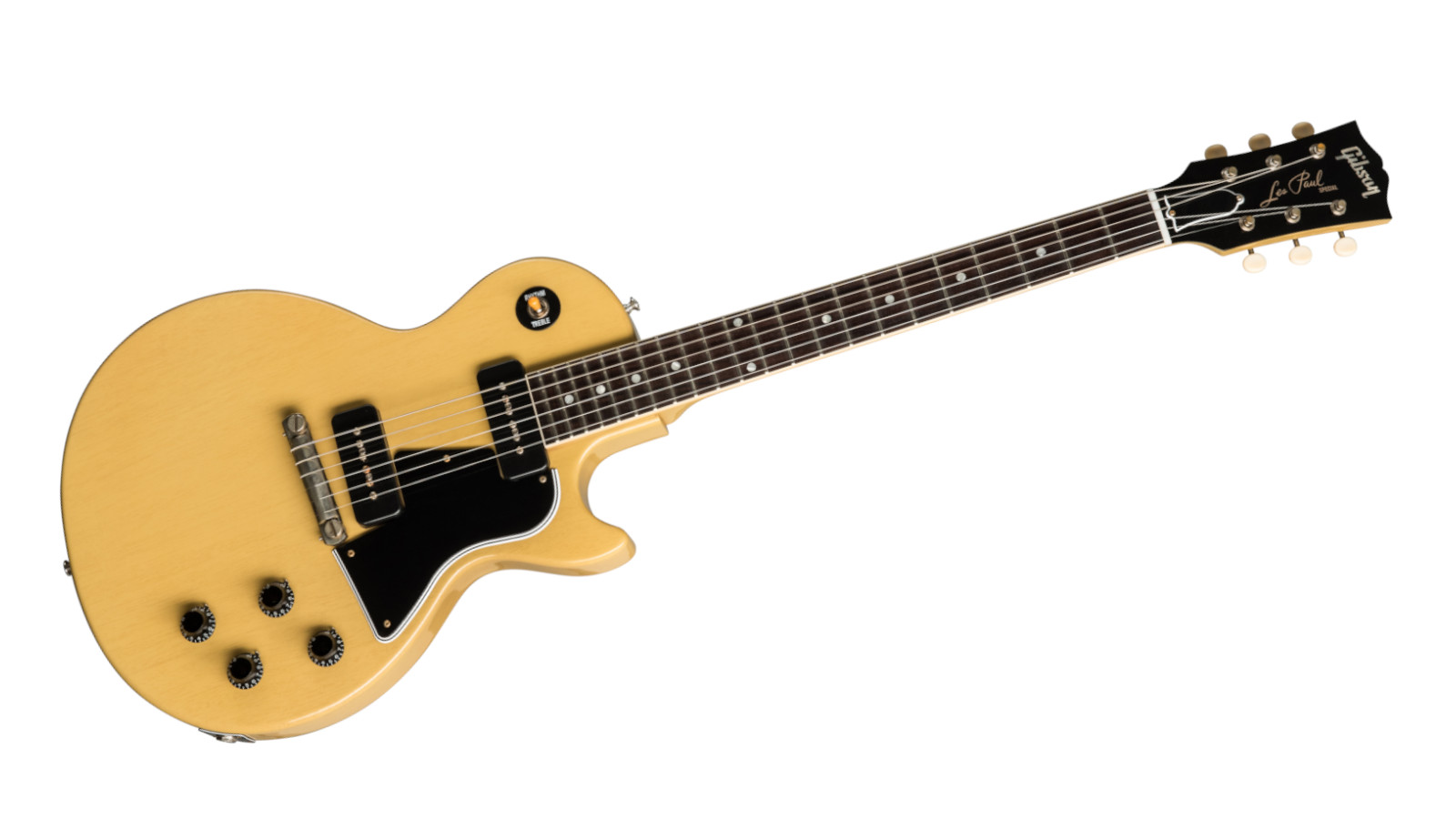
11. Gibson Custom Shop ’57 Les Paul Special Singlecut
Our expert review:
Specifications
Reasons to buy
Reasons to avoid
Nothing quite has the bark and growl of a good P-90, and this Les Paul Special has two of them. Sonically somewhere between a regular single coil and a humbucker, P-90s offer a unique tonal palette and work really well for so many styles of music. Whether you’re playing with tons of gain, or running your rig clean, these Custom Shop pickups offer incredible clarity, and dynamics.
This is a Custom Shop ’57 reissue so it’s built using methods and materials as close to those utilized in the late ’50s as possible. This is often referred to as Gibson’s Golden Era, so you’re getting a guitar that’s pre-steeped in myth and legend. Two volume knobs and two tone knobs allow you to dial in a wide variety of different sounds without touching the amp. The high quality components inside the guitar mean that you can clean your sound up nicely by rolling back the volume on a distorted amp without losing your fundamental tone.
Put simply, the Les Paul Special is a rock and roll machine. The Custom Shop has done an incredible job of recreating one of the 1950s most hallowed instruments for the modern day.
FAQs
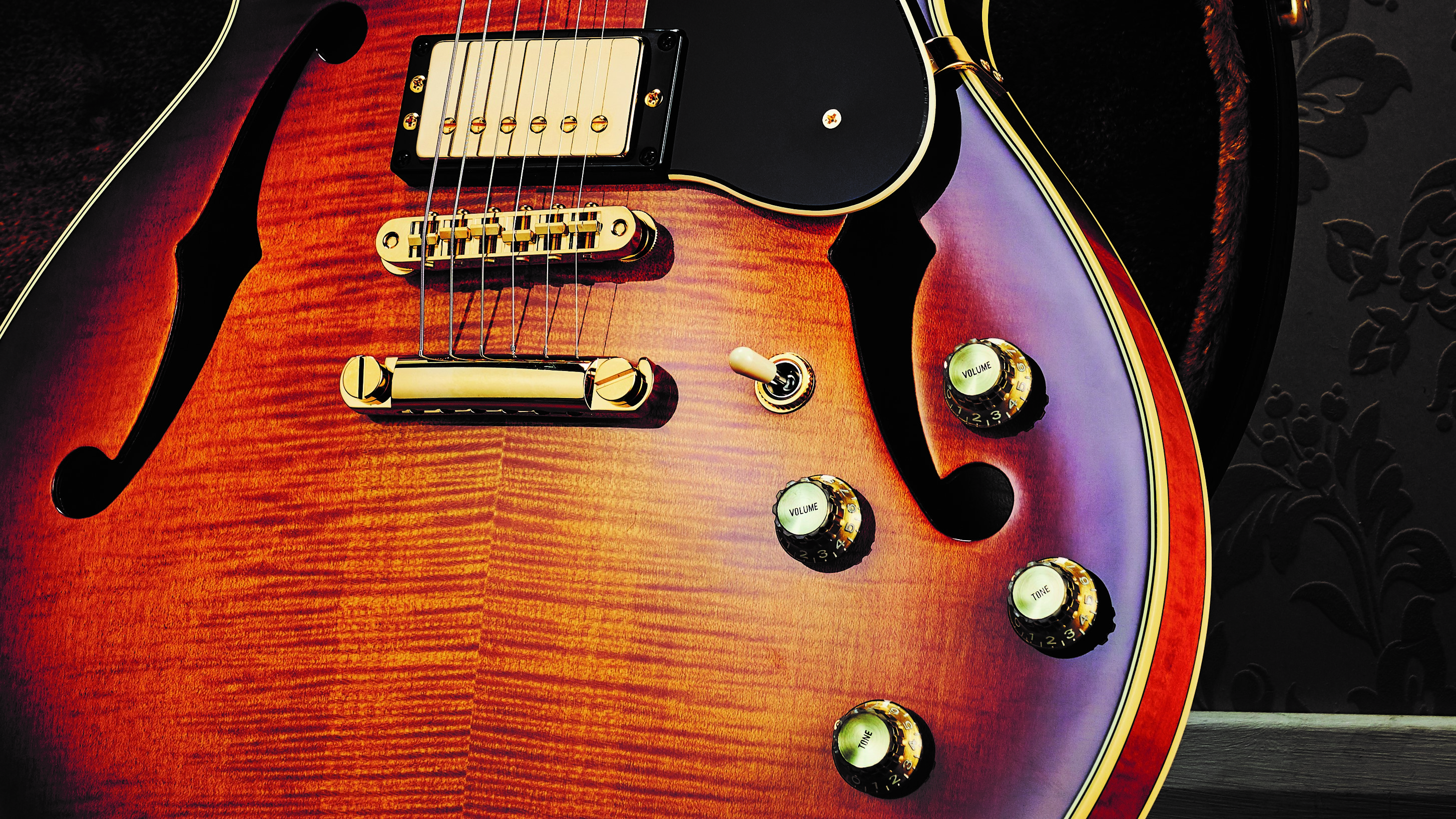
How do I choose the best high-end guitar for me?
Congratulations! If you’re planning on buying a high-end electric guitar, not only will you gain many hours of pleasure from it, you’ll also be investing in an heirloom-quality instrument that can be enjoyed by generations of players to come.
But where should you start? As with any guitar purchase, think about the basics. What genre, or genres, of music do you intend playing? Which body style appeals to you most? What size will be most comfortable to play? The clarity of a single coil vs the warmth of a humbucker, and so on.
Nailing down the basics will help you to narrow down your choice, but don’t be completely blinkered from the alternatives. After all, even Eric Clapton – who was originally a die-hard Gibson player – eventually found the Strat to be a revelation.
What is a high-end guitar?
When we’re talking about the best high-end electric guitars, we’re generally talking about guitars north of $2,000. Of course, there’s no limit to what you can spend. Classic old models, usually with some sort of famous lineage, can go for millions. Here though, we’re generally discussing high-end guitars over $2,000 that can be bought ‘off the shelf’ – that is, they’re not custom built. They’re not necessarily mass-produced, but we’ve tried to include guitars that aren’t crazy difficult to get hold of.
There are of course some incredible builders out there that aren’t as well known as the big guys, though here we’re just trying to cover the best high-end electric guitars that are fairly widely available.
What separates a high-end guitar from other guitars?
Apart from a good chunk of money, there’s quite a lot that can separate the best high-end electric guitars from other cheaper models. Everything that makes up the instrument is going to be of a higher quality. The wood will be of a better grade – there’s debate over how much difference it makes to the sound once plugged in, but a good slab of wood on something like a Tele can certainly make it more resonant. Also, higher grade woods can make for some outstanding finishes too.
The pickups are likely to be better too. You’ll usually get a wider frequency range with high quality pickups, so there’s just more response all over the neck. Low notes are bassier and fuller, and your higher ones are crisper, sweeter and more defined. Better pickups means more clarity too, so you can hear each note of a chord ringing out, even when playing with lots of gain. They’re often more dynamic and responsive too, allowing you to play with more expression and emotion. Even all the components inside will be of a higher grade, ensuring that you get a better tone.
Better hardware is found on high-end guitars as well. This can help in a number of ways – the strings can ring out more, resulting in more sustain and resonance. You’ll notice that it will stay in tune better too, and will play more in tune around the neck because of the improved intonation.
More care and attention to detail goes into these guitars too. As such, you’ll find that they play amazingly. Obviously, most guitars need a bit of a tweak to suit personal taste, but it’s not unusual to feel more inspired when playing one of the best high-end guitars.
Is it going to be better than a mid-range guitar?
Is a guitar priced at $3k three times better than one that’s $1k? After all, the latter is still going to get the job done. It’s probably going to be built well, be reliable and sound good too. It isn’t necessarily a case of it being three times better – it’s all about the value you put into it. The higher end guitar is going to be better, with all of the above improvements, and if it makes you play more, feel more inspired, and essentially have more fun or create better results, then surely it’s worth it!
Think about it in terms of a car – a Ford will get you from A to B with no problems, as will a Bentley or a Rolls Royce. However, you’re going to enjoy the ride a whole lot more in the latter!
Should I buy a high-end electric guitar online?
The simple answer is yes, absolutely. There are a number of good reasons to buy from a reputable online dealer such as Sweetwater or Thomann. First, they operate a bombproof returns system, which makes it easy to return a guitar that you’re not satisfied with.
The second reason is stock. Like it or not, these dealers have access to a far wider range of stock than any local small shop could ever dream of. If you’re buying a high-end guitar sight-unseen, they’ll almost certainly take photographs of the particular instrument you’re interested in, which will help you to assess any potential flaws.
Try to remember that the majority of these dealers are passionate about musical instruments – it’s not as if they’re box-shifting kitchen appliances or IT equipment. Trust us, dealers are fully aware that most musicians are rarely satisfied with owning just one guitar, which means they’re going to work tremendously hard to safeguard your loyalty and the repeat business that may come with it.
Should I consider a custom shop model?
Many of the big guitar brands have custom shops, or something similar. These are separate sections of the factory, usually manned by more experienced builders and luthiers. They’ll have the pick of the best materials going, will create more unique pieces and create guitars for some of the biggest artists in the world. Pick the right Master Builder from the Fender Custom Shop for example, and you can get a guitar made by the person that builds them for the likes of Keith Richards, Joe Bonamassa, Eric Clapton etc.
High-end guitar guide
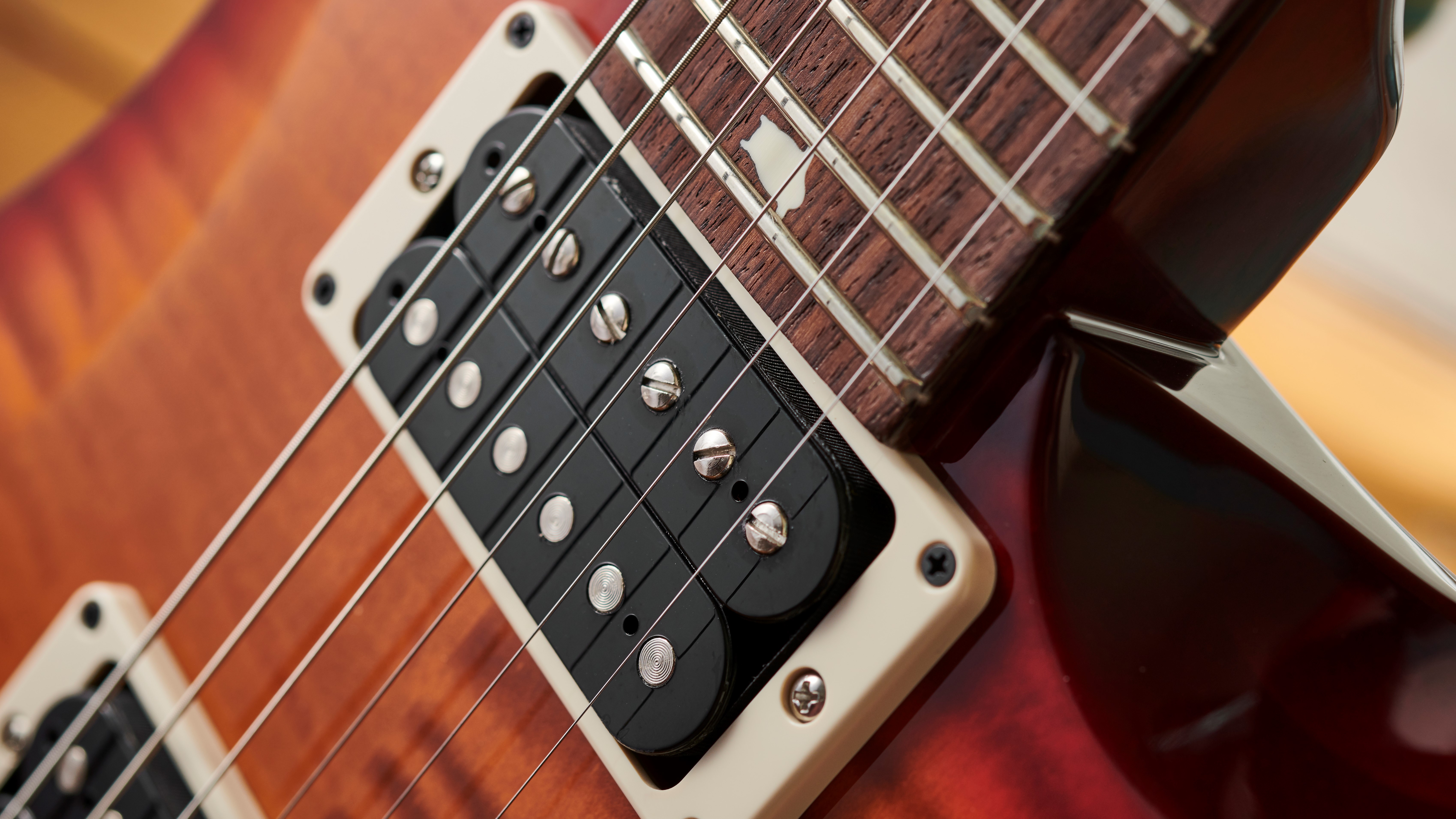
What is the definition of a high-end guitar? Cost? These days, the sky’s the limit when it comes to pricing. If you want a diamond-encrusted headstock and gold hardware, then somebody somewhere will build it for you, but the cost of your guitar could easily soar into the tens of thousands of dollars or pounds.
So, to keep this guide manageable, our low-tide mark is around $2,000/£2,000, and our high-tide mark is four times that. Why? At the lower end of that scale, brands start to introduce their ‘pro’ series guitars – think Fender with its American Ultra Luxe range. At the higher end, you’ll be getting something very special indeed, but it won’t be excessively blingtastic.
All of the guitars mentioned in this guide are available ‘off the shelf’. You can easily order any of them online, or pop down to your friendly local guitar store and pray that they have one in stock. But that’s only half the story. If you have deep pockets, and a creative outlook, then you can purchase something more individual, or even unique. Here’s how.
Most of the big brands – Fender, Gibson, PRS et al – run custom shops that employ skilled luthiers to produce everything from subtle enhancements to complete one-offs. Fender pioneered this approach, and it currently offers two levels of craft – Custom-built and Masterbuilt.
Fender’s Custom-built facility employs around 50 luthiers, who will customize one of the manufacturer’s base models for you from a catalog of options – neck shape, pickups and so on. The Masterbuilt team is much smaller, and the guitars are far more exclusive. You’ll be working in partnership with one of a dozen big-name luthiers, who can build something totally unique for you. In Fender’s words, no idea is too crazy and no job too large or too small.
We’ve picked Fender as an example, but most brands offer a similar service. Even Yamaha, which is best known for its mass-produced guitars, has a custom shop that’s capable of exhibition-quality work.
Smaller companies, like Suhr and Heritage, don’t produce entry-level models. All of their guitars are low-volume, high-end instruments, but their luthiers will also customize these models further for a fee.
Finally, there are plenty of individual luthiers around the world who will build you a custom guitar. The disadvantage with this option is that they’ll rarely have access to the vast choice of tonewoods that a custom shop working within a corporation like Yamaha does. On the flip side, you’ll end up with a guitar that’s totally individual to you, and the build quality should be high.
Smaller companies, like Suhr and Heritage, don’t produce entry-level models. All of their guitars are low-volume, high-end instruments...
The problem with these custom or bespoke options, regardless of whether you’re commissioning a company like Fender or a local luthier, is time. Why wait months, or even a year or more, for a luthier to build you a guitar when you can buy an off-the-shelf guitar from dealers such as Thomann, Sweetwater or Guitar Center?
As well as stocking regular high-end models, it’s common for dealers to carry a good number of custom shop guitars from all the big brands. The spec will usually be quite generic, but they’ll be fine guitars.
It’s also quite common for dealers to stock a limited number of slightly more unusually specced custom shop guitars that they’ll have commissioned some months previously. These are there to help clients who are looking for something a little bit different but without the long wait. Often, these will be labeled ‘dealer select’ or ‘dealer exclusive’.
Of course, there’s absolutely no need to buy a custom shop guitar, as there are plenty of high-end electrics to choose from within most brands’ core ranges. Some are just as expensive and just as well made as their custom counterparts.
Expectations of quality
You can trust Guitar World
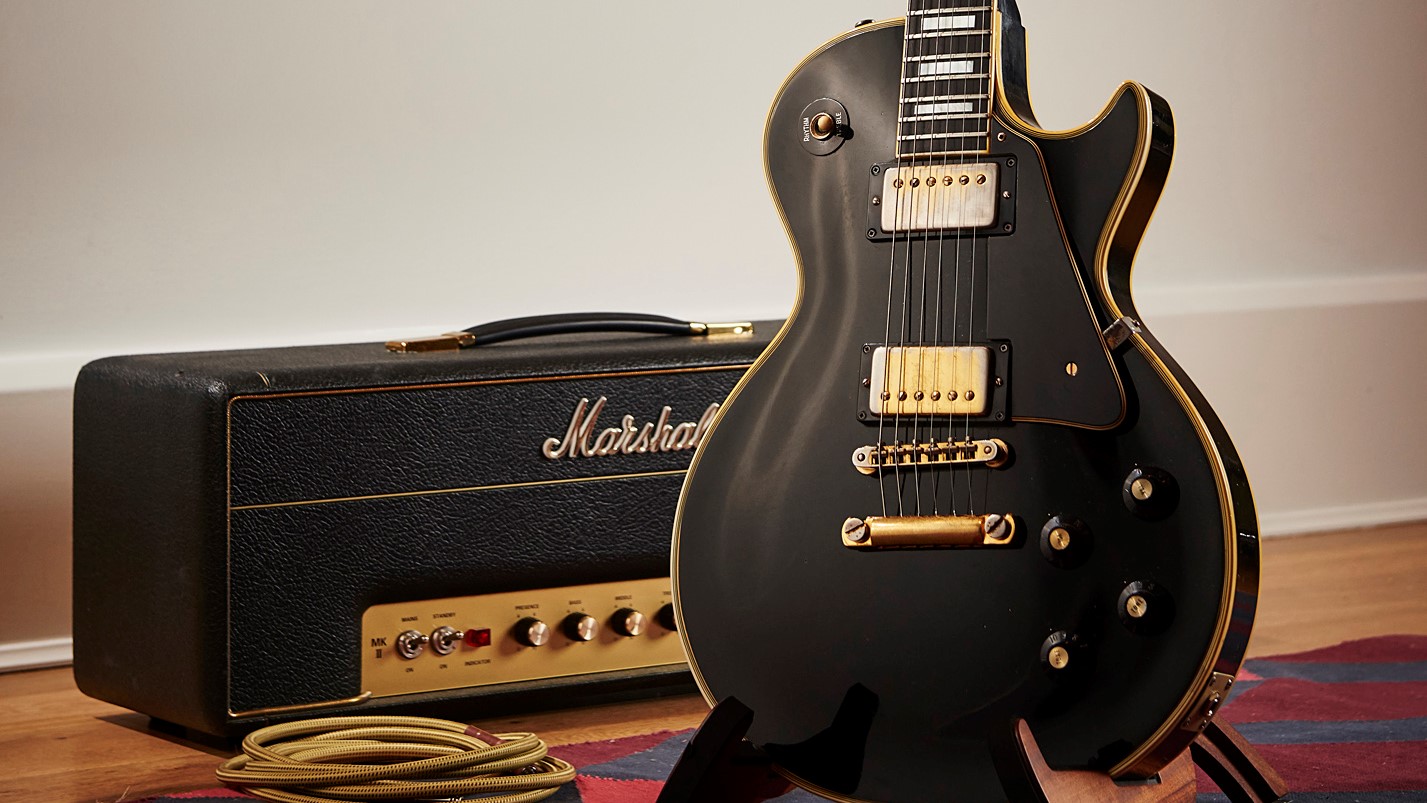
From a distance, an Epiphone Les Paul and a high-end Gibson Les Paul will look broadly similar. The same observation applies to a Squier Tele and its high-end Fender cousin. So, where’s all your money going?
You can expect a high-end guitar to be flawless. That means no surface imperfections and no significant gaps in areas such as neck pockets. Bindings should be straight, and frets should be perfectly seated, leveled and polished.
Materials should be first-class. Generally speaking, tonewoods become more expensive as the figuring becomes more pronounced, but they should also have excellent acoustic properties and not be overly heavy. Sadly, there’s no standard for quality, so if a guitar top or neck is described as AA or AAA, just consider the descriptor as rough guidance, and remember it has no bearing on the guitar’s sound.
Stainless-steel frets are commonplace on high-end guitars, and some vintage-inclined brands will even formulate glue the way it was made back in the ’50s or ’60s.
You can also expect components to be of a high standard – especially pickups, tuners and trems, but also the kit that’s hidden out of sight, such as wiring, capacitors and switchgear.
Finally, finish is very important. Guitars at this level will almost certainly have a fine coat of nitro-cellulose applied to them. This protects the surface of the wood, looks stunning and becomes even more attractive as it ages. It’s quite a delicate finish, but over time your instrument will build up a glorious patina of wear. Because it’s so thinly applied, it won’t dampen the way your guitar naturally reverberates.
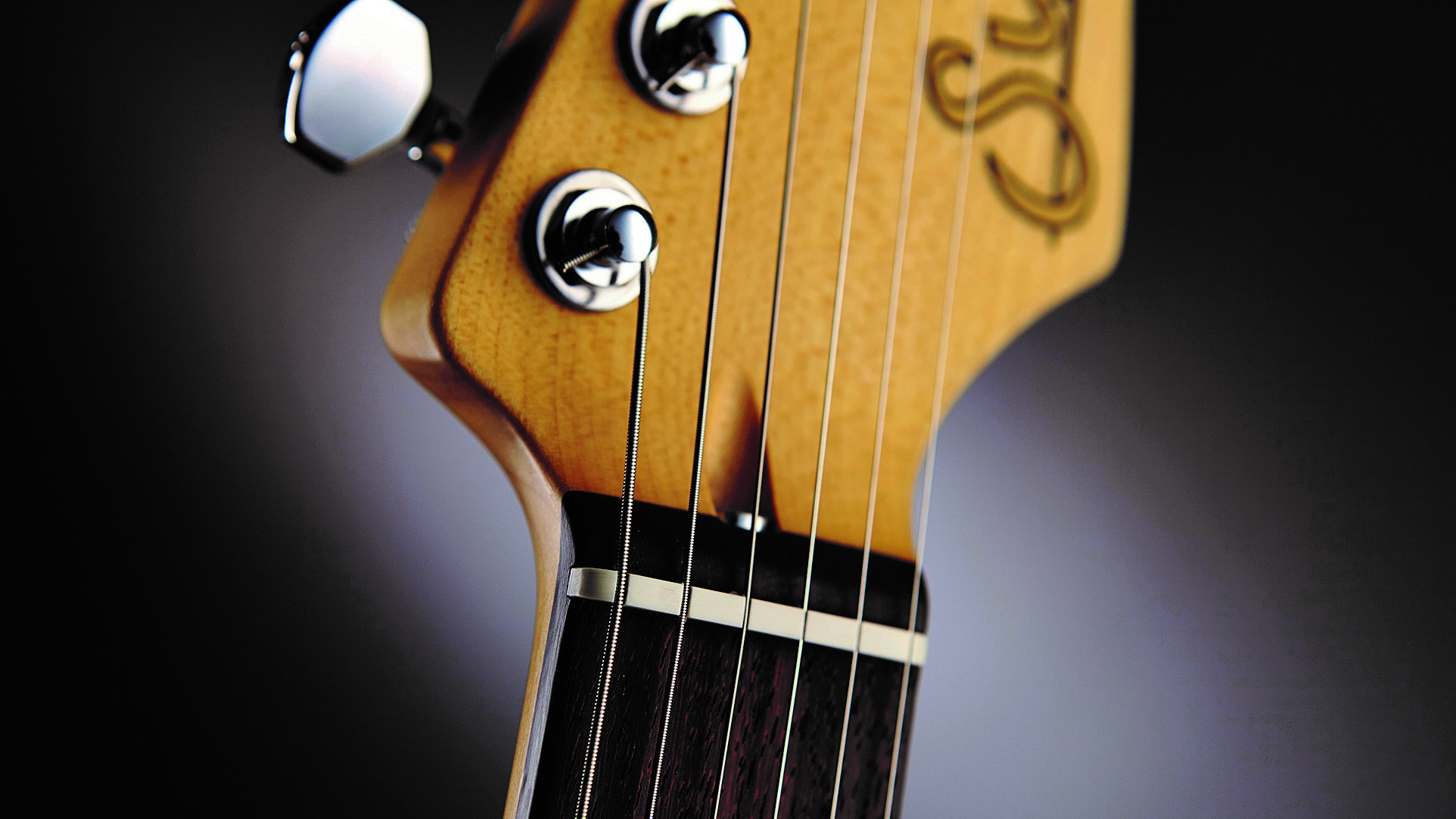
The alternative is polyurethane, which is commonly found on mid- to high-end guitars. This has far better protective qualities but doesn’t age as sympathetically. It works well if applied thinly, but a gloopy layer of polyurethane looks plasticky and will choke your guitar’s tone.
We’re often led to believe that the ’50s and ’60s were the golden decades of electric guitar manufacture, with the best instruments coming out of the US. This is largely nonsense – it’s just that US quality got even worse in the ’70s and ’80s!
The truth is that, right now, quality has never been higher in the traditional guitar-making heartlands of the US, Europe and Japan. Far East nations, such as China, Korea and Indonesia, are also producing incredible work. So, the best time to buy an excellent high-end guitar is now.
How we test
Here at Guitar World, we are experts in our field, with many years of playing and product testing between us. We live and breathe everything guitar related, and we draw on this knowledge and experience of using products in live, recording and rehearsal scenarios when selecting the products for our guides.
When choosing what we believe to be the best high-end electric guitars available right now, we combine our hands-on experience, user reviews and testimonies and engage in lengthy discussions with our editorial colleagues to reach a consensus about the top products in any given category.
First and foremost, we are guitarists, and we want other players to find the right product for them. So we take into careful consideration everything from budget to feature set, ease of use and durability to come up with a list of what we can safely say are the best high-end electric guitars on the market right now.
Read more about our rating system, how we choose the gear we feature, and exactly how we test each product.
Related buying guides
- On a budget? Check out the best cheap electric guitars under $500
- And the best electric guitars under $1,000
- Or even the best electric guitars under $2,000
- If you want something wonky take a look at the best offset guitars
- Or tune down with the best baritone guitars
All the latest guitar news, interviews, lessons, reviews, deals and more, direct to your inbox!
When Simon's childhood classical guitar teacher boasted he 'enjoyed a challenge', the poor man had no idea how much he'd underestimated the scale of the task ahead. Despite Simon's lack of talent, the experience did spark a lifelong passion for music. His classical guitar was discarded for an electric, then a room full of electrics before Simon discovered the joys of keys. Against all odds, Simon somehow managed to blag a career as a fashion journalist, but he's now more suitably employed writing for Guitar World and MusicRadar. When not writing or playing, he can be found terrifying himself on his mountain bike.
- Matt McCrackenJunior Deals Writer
- Ross Holder
- Richard Blenkinsop

